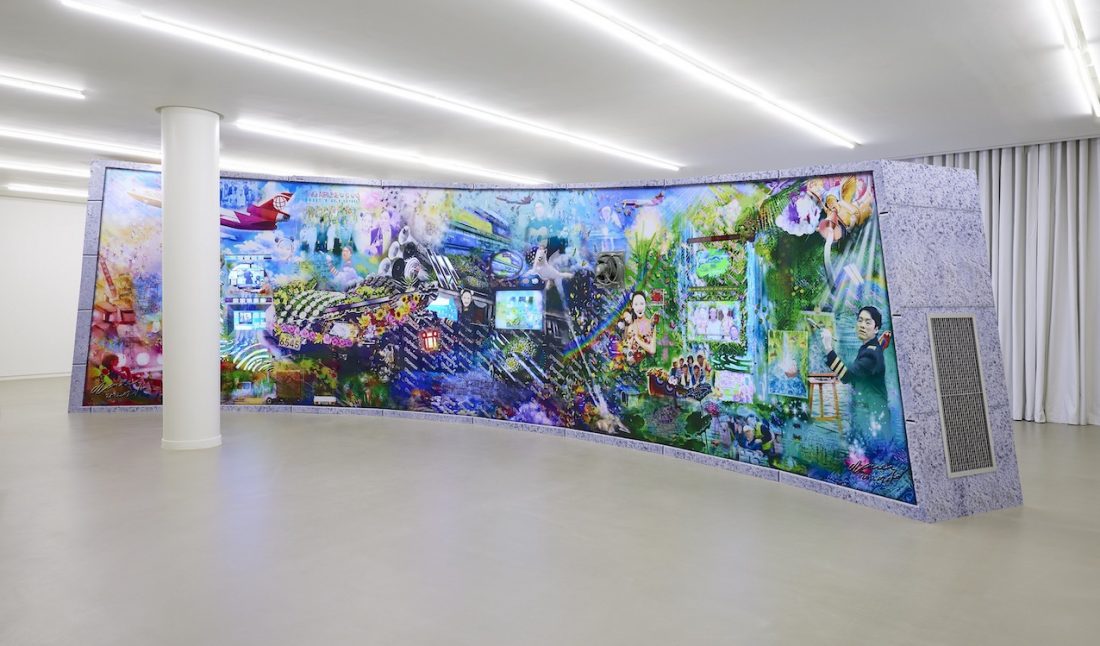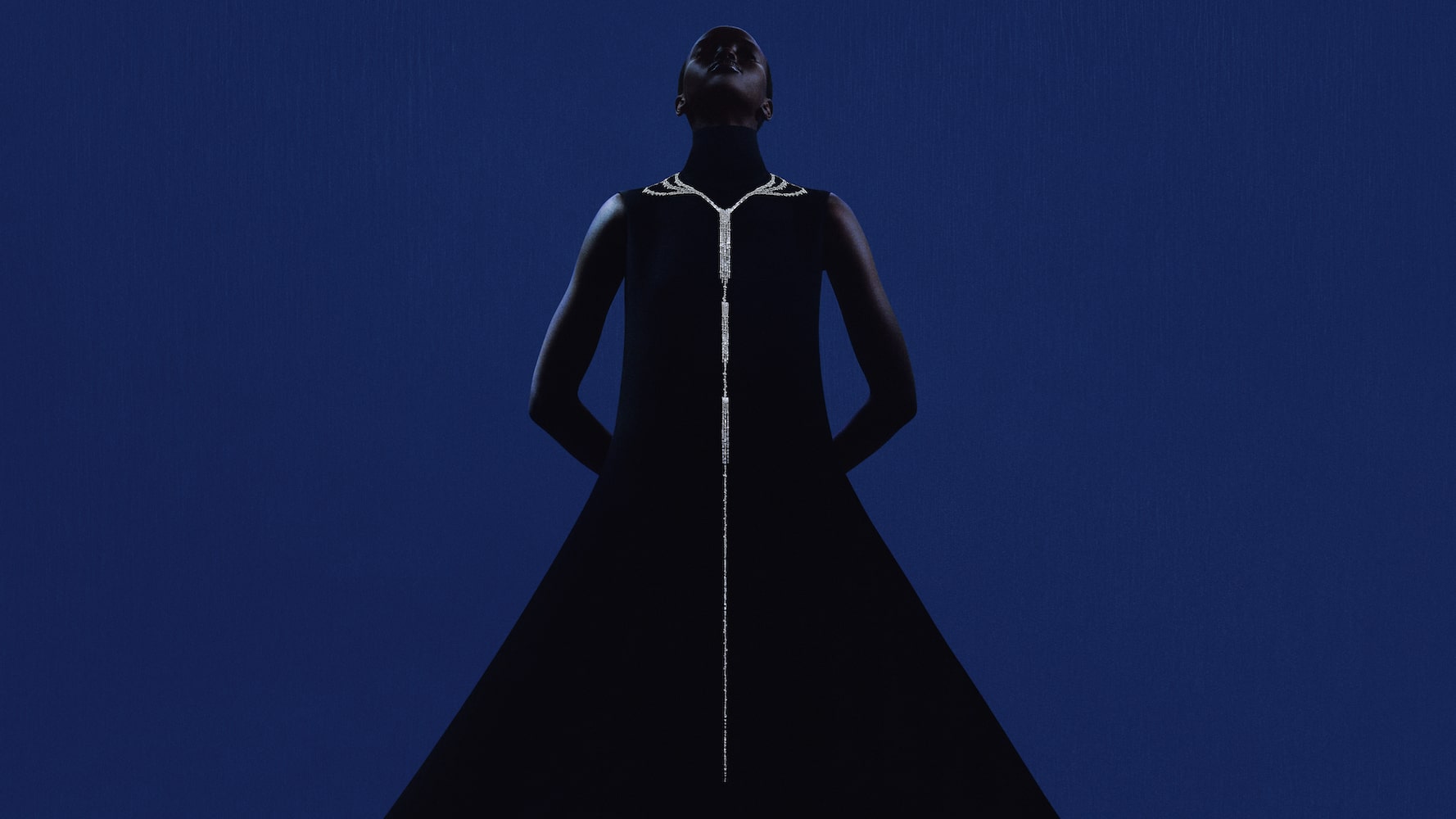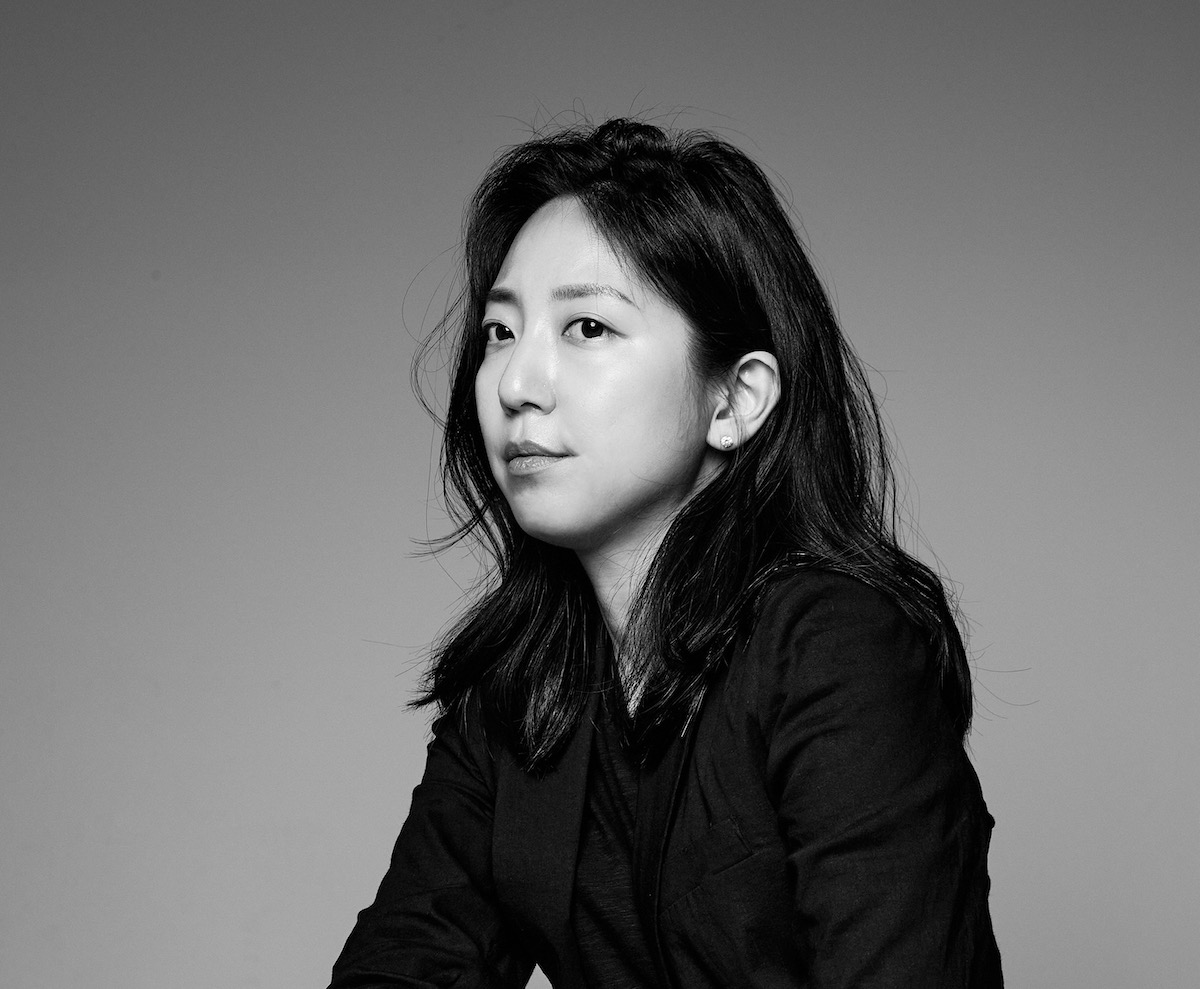Sungsil Ryu‘s artistic practice focuses on the mechanics of materialistic desire in modern-day Korea, “influenced by the complex intertwining of traditional Korean Confucian values and the United States–led neoliberal global order,” she told Whitewall recently. She graduated from Seoul National University’s sculpture department in 2018, and her work in video, installation, and performance employs a unique style of dark humor. In her “Cherry Jang” video series, for instance, she embodied a new persona, cloaked in heavy makeup and accessories like chunky earrings, and a ticking time bomb strapped to her forehead. Its satirical narrative spoke to the general tone in South Korea in response to North Korea’s missile program, with “Cherry Jang” poking at literacy, status, manifestation, and death.
In exploring Korean culture and sociopolitics, Ryu focuses on “the nature of the individual who creatively appropriates already existing structures for their own purposes.” With work currently on view in Transmediale 2024 in Berlin (January 31–April 14), Ryu shared with Whitewall how her upbringing and current feelings about Seoul influence her art’s focus, and why she may be stepping away from the one medium she’s known most for.
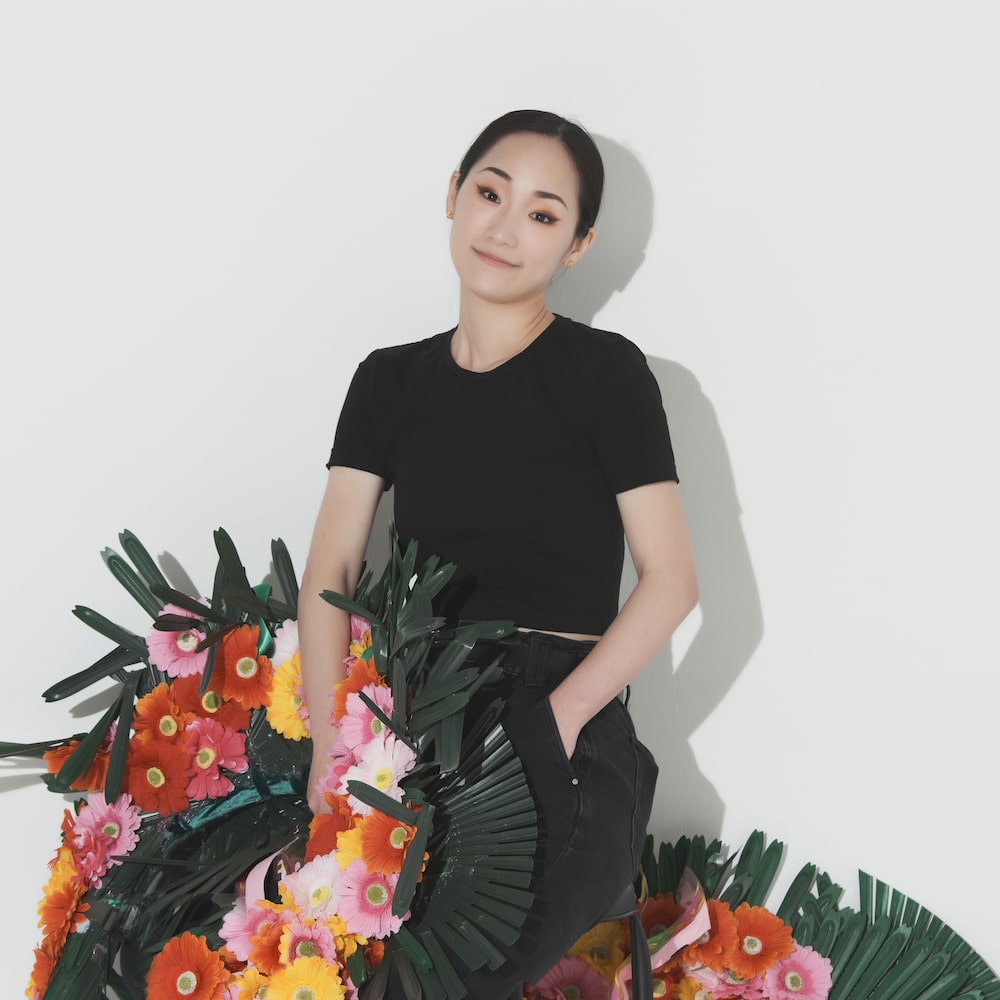 Portrait of Sungsil Ryu, courtesy of Seoul Art Space Geumcheon.
Portrait of Sungsil Ryu, courtesy of Seoul Art Space Geumcheon.
WHITEWALL: Since graduating with a degree in sculpture, you’ve deviated from fine art to create more multimedia works. Was creating more digitally a natural evolution?
SUNGSIL RYU: I still find myself attracted to the traditional medium of sculpture, and while I was in school, all of my works were sculpture and installation art. I first experimented with video art around the time of my graduation show. I was intrigued by what I could make with video art, and the response from the art world also wasn’t bad. Since then, I started to become more interested in digital platforms. Even though it wasn’t my intention, I’m now mostly known as a digital-based artist. That said, in the future, I don’t know if I will still be working in a digital medium.
There is also a more complicated reason for why I wanted to make video art. My adolescent fascination with Chris Cunningham definitely played a part, and I also felt like there were too many narratives I wanted to tell for me to just stick to sculpture. Still, the most decisive factor was my realization that video offered the most efficiency and freedom in terms of distributing my work. Efficiency and freedom are important to me, so that really was the deciding factor.
“Video offered the most efficiency and freedom in terms of distributing my work,” —Sungsil Ryu
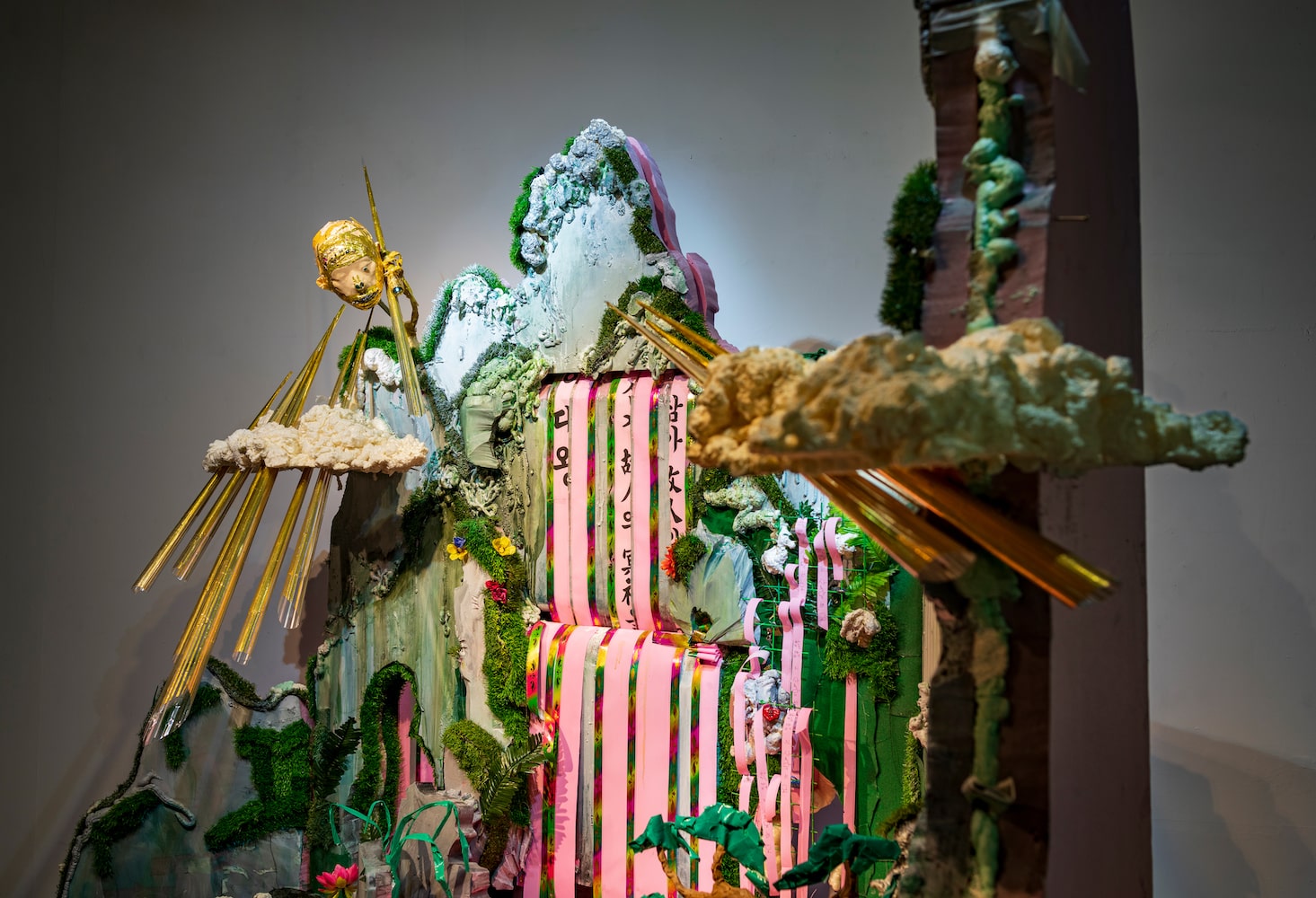 Sungsil Ryu, “I’m not dead!,” 2019, 150 x 200 x 280 cm, motor, mixed media, courtesy the artist.
Sungsil Ryu, “I’m not dead!,” 2019, 150 x 200 x 280 cm, motor, mixed media, courtesy the artist.
WW: CHERRY-BOMB (2018) was the first work you made after school. Why?
SR: This work was a collaboration with fellow artists of the art collective Eobchae. At that time, and kind of always, there was a lot of alarm over North Korea’s missile program. I noticed that there were a lot of South Korean YouTubers who saw this rather serious world event as material for making “entertaining content” that could get cheap views by using exaggeration and outright fabrication. The work CHERRY-BOMB is about a fictional Korean-American streamer named Cherry Jang who combines talk about North Korea with her own theory about the apocalypse to scare her viewers. Ultimately, the work implies that all this talk is “empty” and that it’s all about this one person’s desires. The video, which consists of six minutes of edited footage, can be watched on Cherry Jang’s YouTube channel.
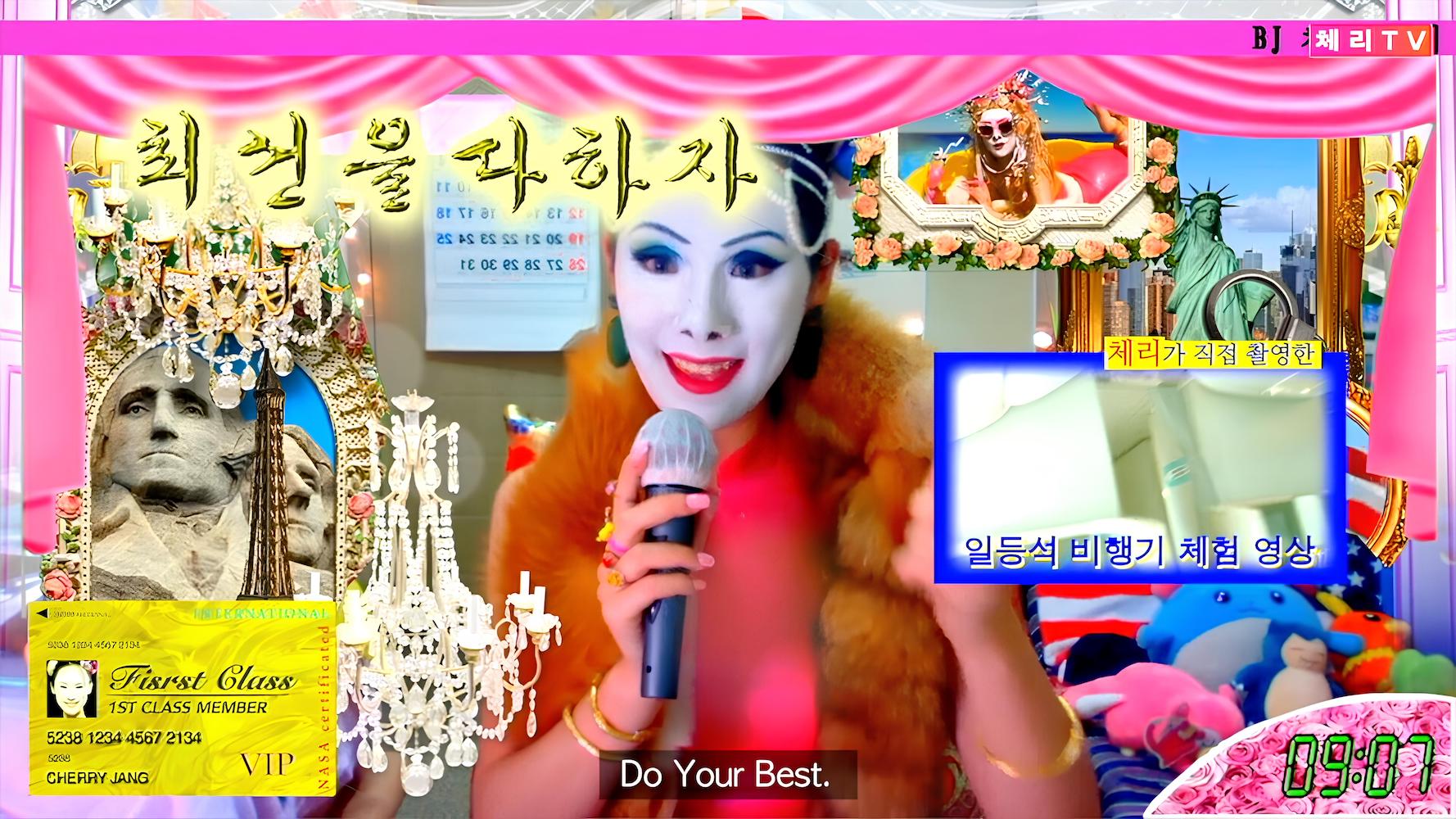 Sungsil Ryu, “Cherry Jang,” 2018, single channel video, courtesy of the artist.
Sungsil Ryu, “Cherry Jang,” 2018, single channel video, courtesy of the artist.
” I noticed that there were a lot of South Korean YouTubers who saw this rather serious world event as material for making ‘entertaining content’ that could get cheap views by using exaggeration and outright fabrication,” –– Sungsil Ryu
WW: How does being based in Seoul continue to inform your projects?
SR: I was born and grew up in Seoul, but honestly, even though I’m not sure why, I don’t feel any real attachment to living here or any particular sense of pride in it. For me, Seoul is just an efficient place for workers where they can maximize the productivity of their labor.
My parents are from Jeolla Province in southwestern Korea. Historically, that part of Korea has been discriminated against in terms of politics, economic development, and society in general. In order to succeed financially, my parents came to Seoul out of necessity, and they eventually were successful enough to buy a house in Gangnam, so you could say that they achieved their dream.
That said, they regularly suffered disadvantages and unfair treatment because of where they were from. Because of that, they were even more hyper-focused on becoming “real Seoul people” or “real Gangnam people.” For them, becoming a “real” Gangnam person both proved their superiority and served their purpose of getting revenge against the world.
“For me, Seoul is just an efficient place for workers where they can maximize the productivity of their labor,” ––Sungsil Ryu
WW: As someone who grew up in that environment, what does Seoul feel like to you now?
SR: Seoul feels like a battlefield where countless people from outside Seoul come seeking to restore their honor by achieving success. This experience of mine has had a significant impact on how my works simultaneously illuminate aspects of Korean society and materialism.
There is a common idiom in Korea: “In Seoul, you can get your nose cut with your eyes open.” The phrase is a commentary on the mercilessness of life in Seoul. That is, even if you have your eyes open, there are still people brazen enough to cut your nose off and steal it. The idiom probably derives from when naive countryside people arrived in Seoul for the first time and were taken advantage of by ruthless grifters and scammers.
To me, Seoul is a low-trust society where everyone watches out for themselves. There is a cruelty to Seoul where distrust and suspicion are kind of everyone’s default setting. Nevertheless, that said, as a Korean person, I feel that being able to work in Seoul is actually quite a blessing. Compared to other cities outside Korea, the cost of living is rather low, and it is easy to get materials and find fellow artists to work with.
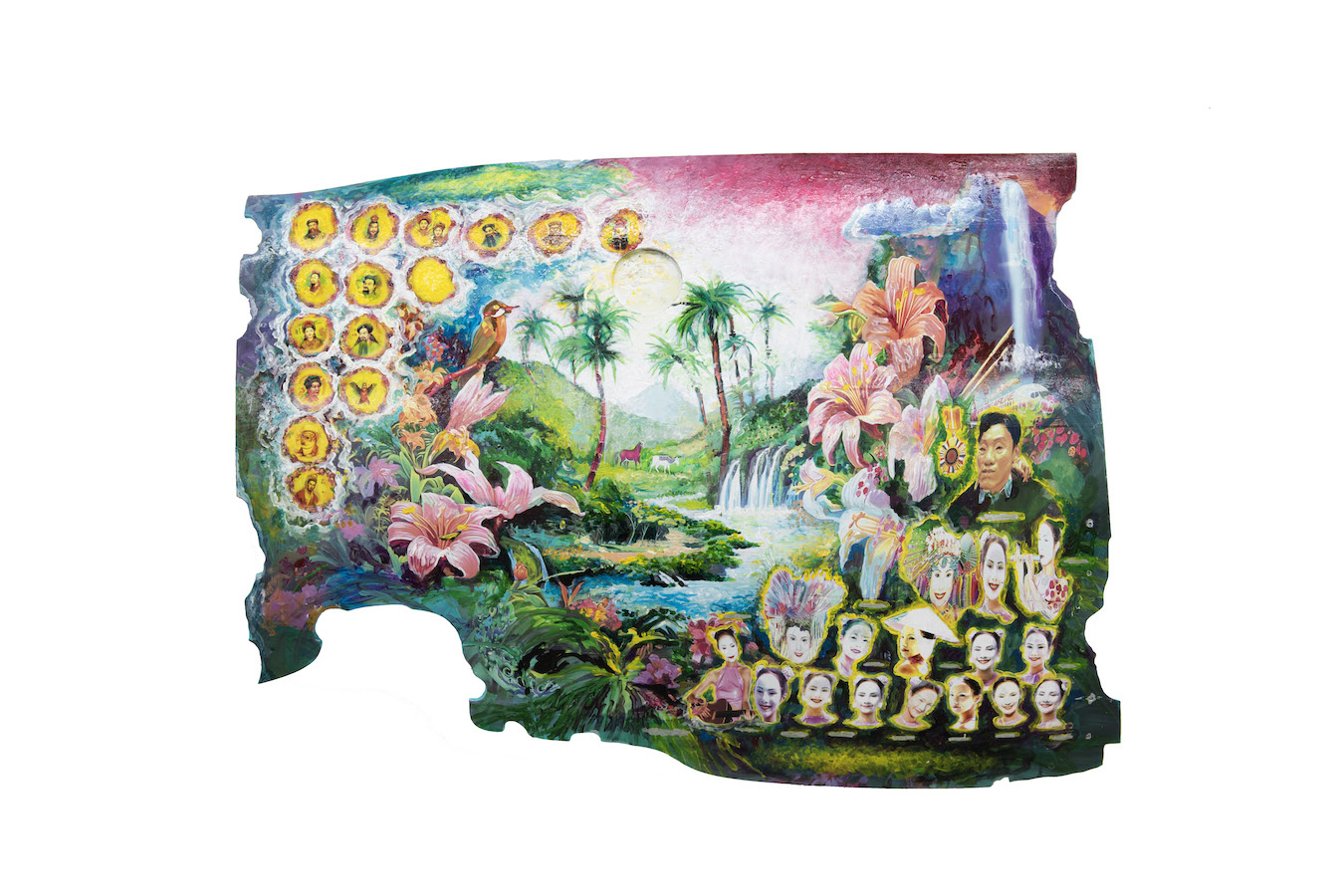 Sungsil Ryu, “Bigking Airlines New Engine Fundraising Drive,” 2023, courtesy of the artist.
Sungsil Ryu, “Bigking Airlines New Engine Fundraising Drive,” 2023, courtesy of the artist.
“This experience of mine has had a significant impact on how my works simultaneously illuminate aspects of Korean society and materialism,” ––Sungsil Ryu
WW: Last year, you had a solo show in Seoul titled “The Burning Love Song” at Atelier Hermès. Why was your persona Lee Daewang centered in this narrative?
SR: Lee Daewang is the CEO of a fictional travel agency for the elderly called Big King Travel. He is the stereotypical entitled baby boomer Korean man in his sixties who is hated by the younger generation. This character has been an important part of these works since the beginning, but I have never used him as a main character. So I thought it would be good to expand on his narrative through the Atelier Hermès show.
By depicting the pet crematorium he is opening, I wanted to reveal that within this stereotypical character, there is also a kind of hidden purity and complex psychology. Yet, this “purity” is not necessarily in pursuit of some “greater good.”
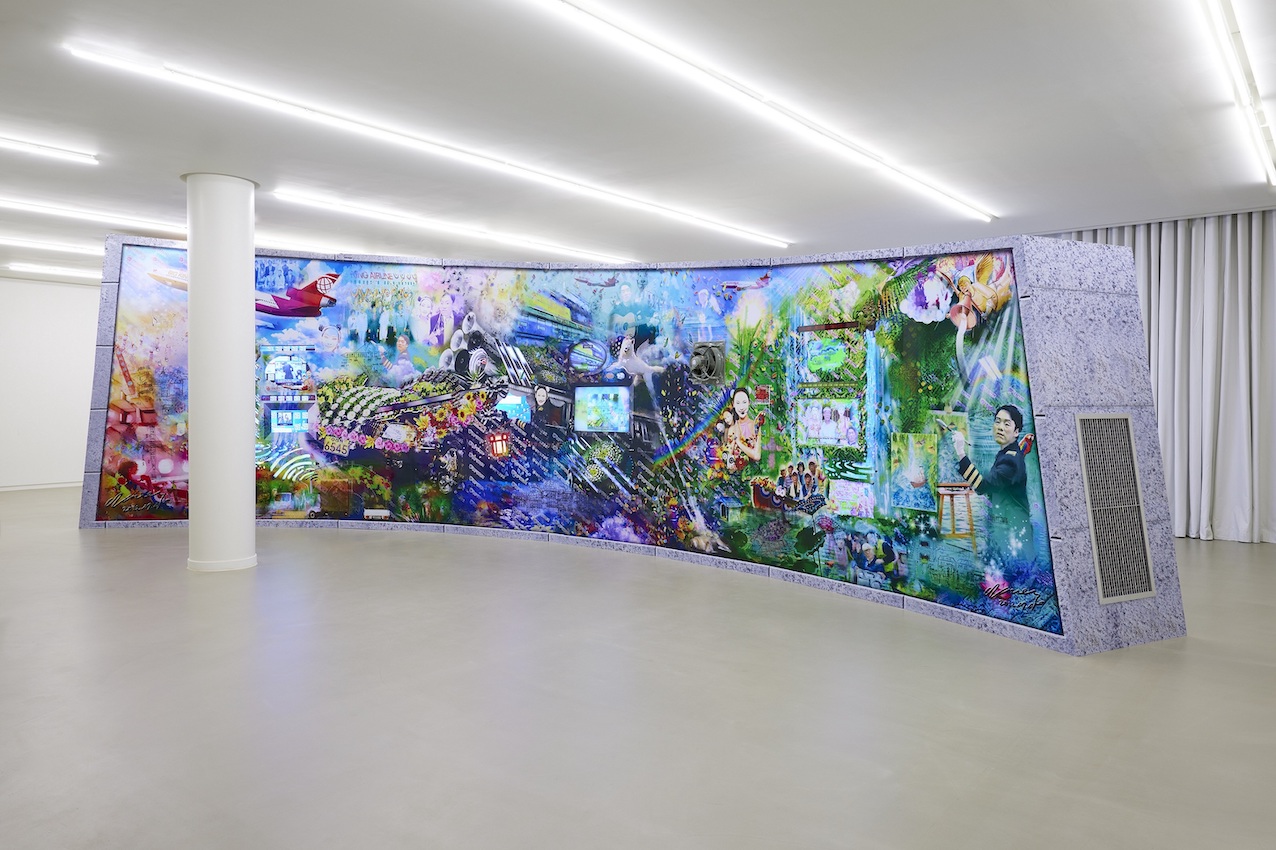 Installation view of Sungsil Ryu’s solo exhibition “The Burning Love Song” at Atelier Hermès, photo by Sangtae Kim.
Installation view of Sungsil Ryu’s solo exhibition “The Burning Love Song” at Atelier Hermès, photo by Sangtae Kim.
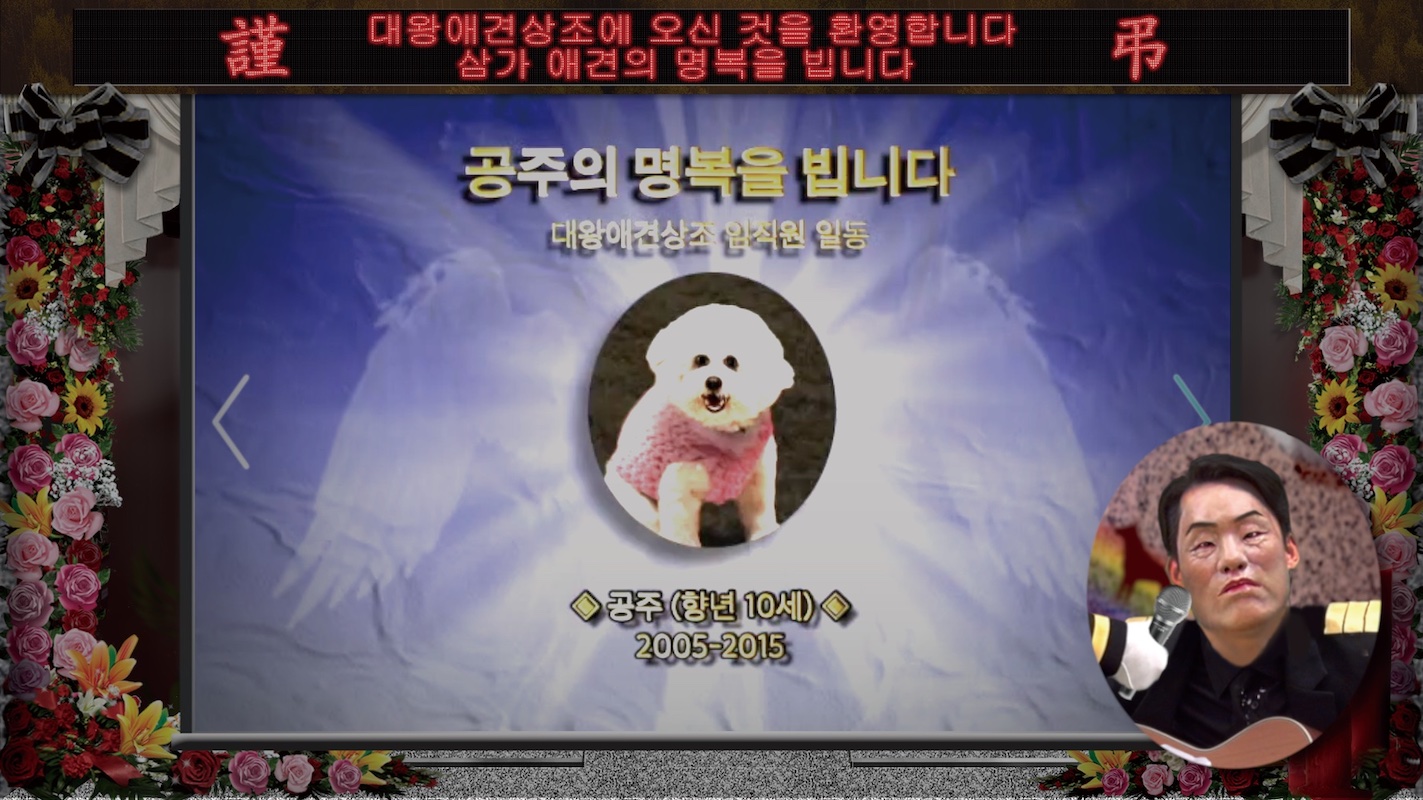 Sungsil Ryu, “The Burning Love Song,” Atelier Hermès, 2022, courtesy of the artist.
Sungsil Ryu, “The Burning Love Song,” Atelier Hermès, 2022, courtesy of the artist.
“Within this stereotypical character, there is also a kind of hidden purity and complex psychology,” ––Sungsil Ryu
WW: Many of your works have ended in hypothetical funerals. What does death, or “the end,” signify to you? Why is this important to include in your work?
SR: In my works, death always implies an eternal afterlife. That is, ghosts of the deceased always appear “alive” in my works. For example, Goodbye Cherry Jang (2020) is a video of the funeral of Cherry Jang after she dies from overwork. But Cherry Jang, as a ghost, crashes the funeral and delivers her own eulogy to the people in attendance. In Mr. Kim’s Revival (2019) as well, a deceased grandpa becomes a ghost and appears in front of his grandchildren. So, for me, “death” and “the end” aren’t synonyms. That said, the “eternity” that I invoke in my work is far from the beautiful, peaceful version of eternity spoken about in religion. It is more about the never-ending desires of humans, like the cursed fate of Sisyphus.
There may be something romantic about “eternity,” but I also think there is something terrifying about it. I use these characters that never die as a medium to create a kind of infinite loop between the world of the living and the afterlife.
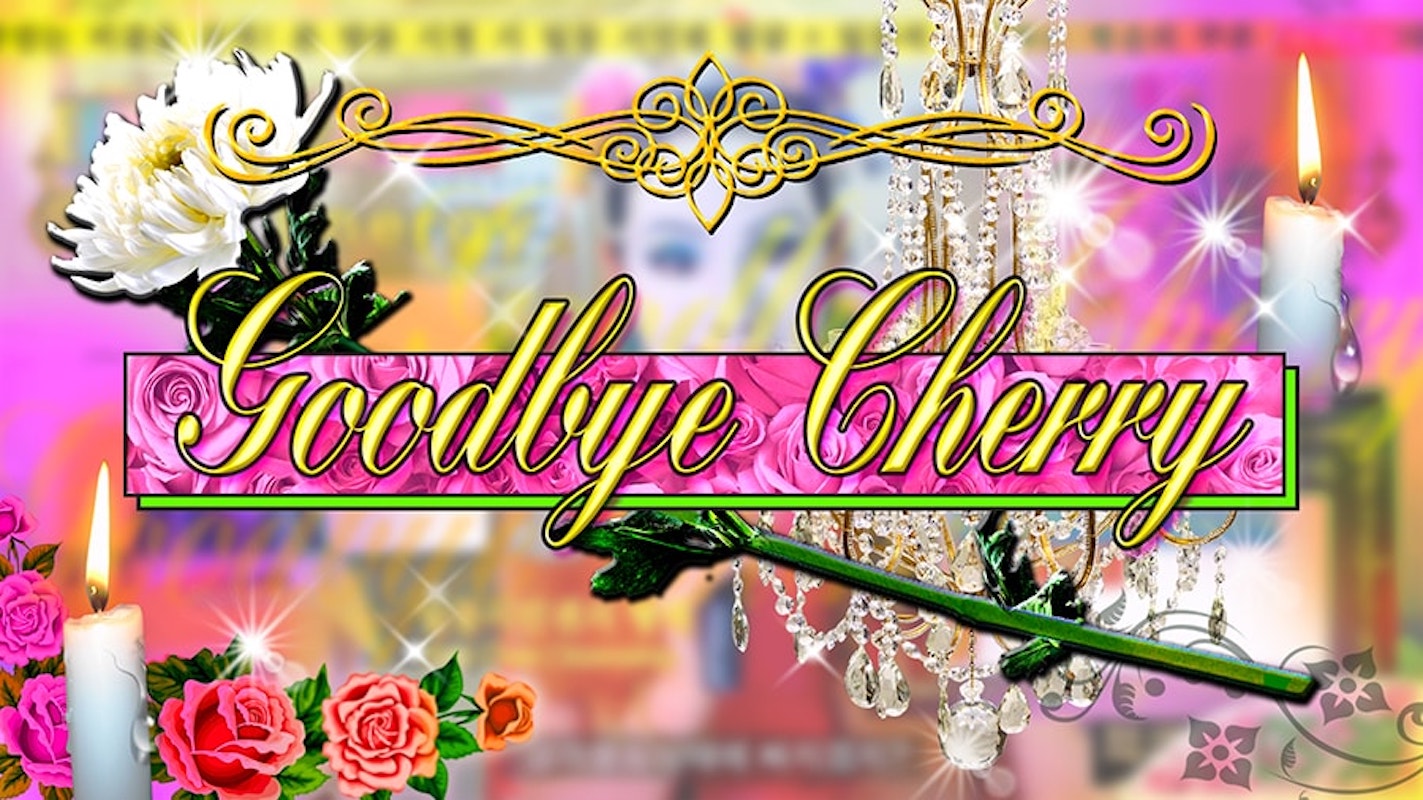 Sungsil Ryu, “Goodbye Cherry Jang,” 2019, video and OBS based performance, courtesy of the artist.
Sungsil Ryu, “Goodbye Cherry Jang,” 2019, video and OBS based performance, courtesy of the artist.






